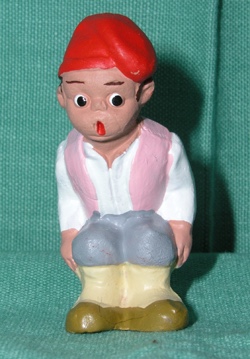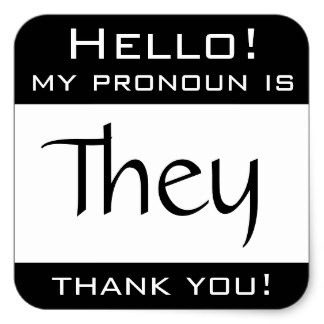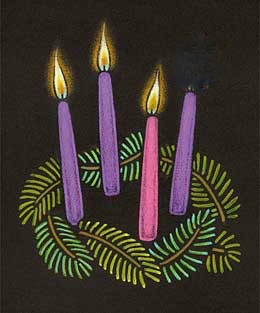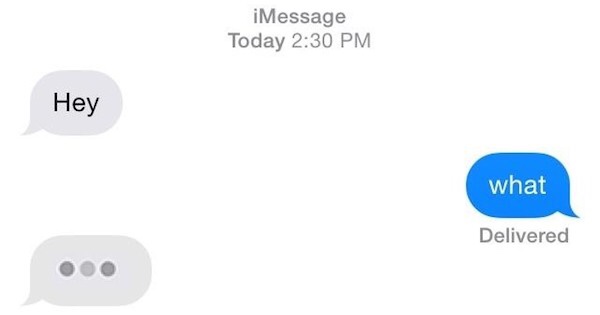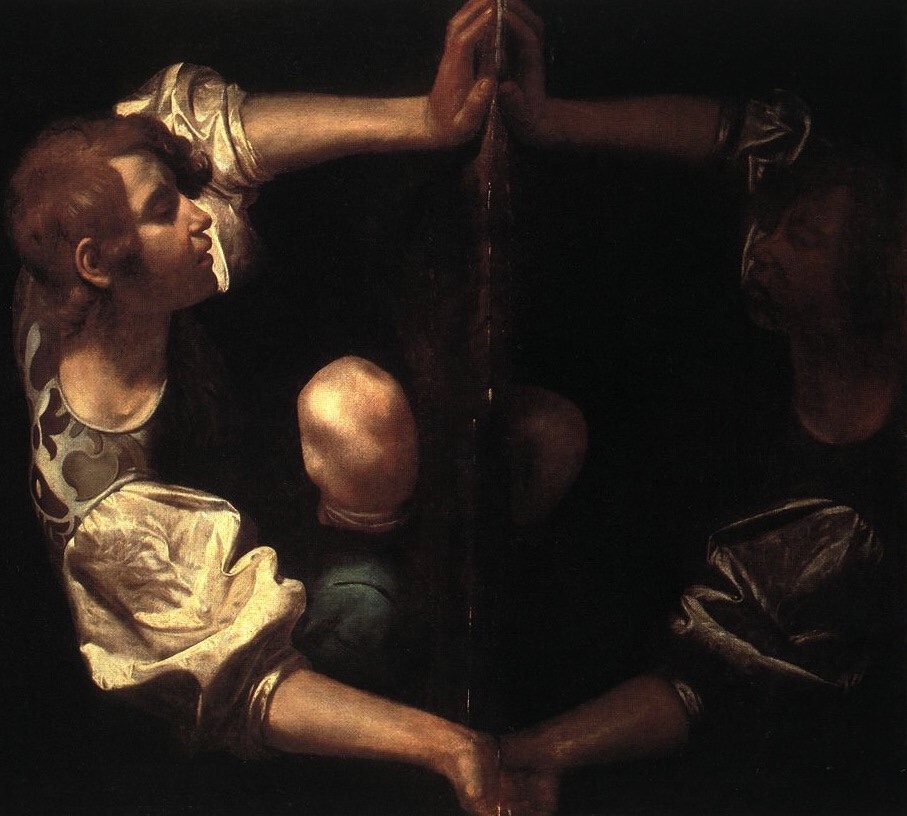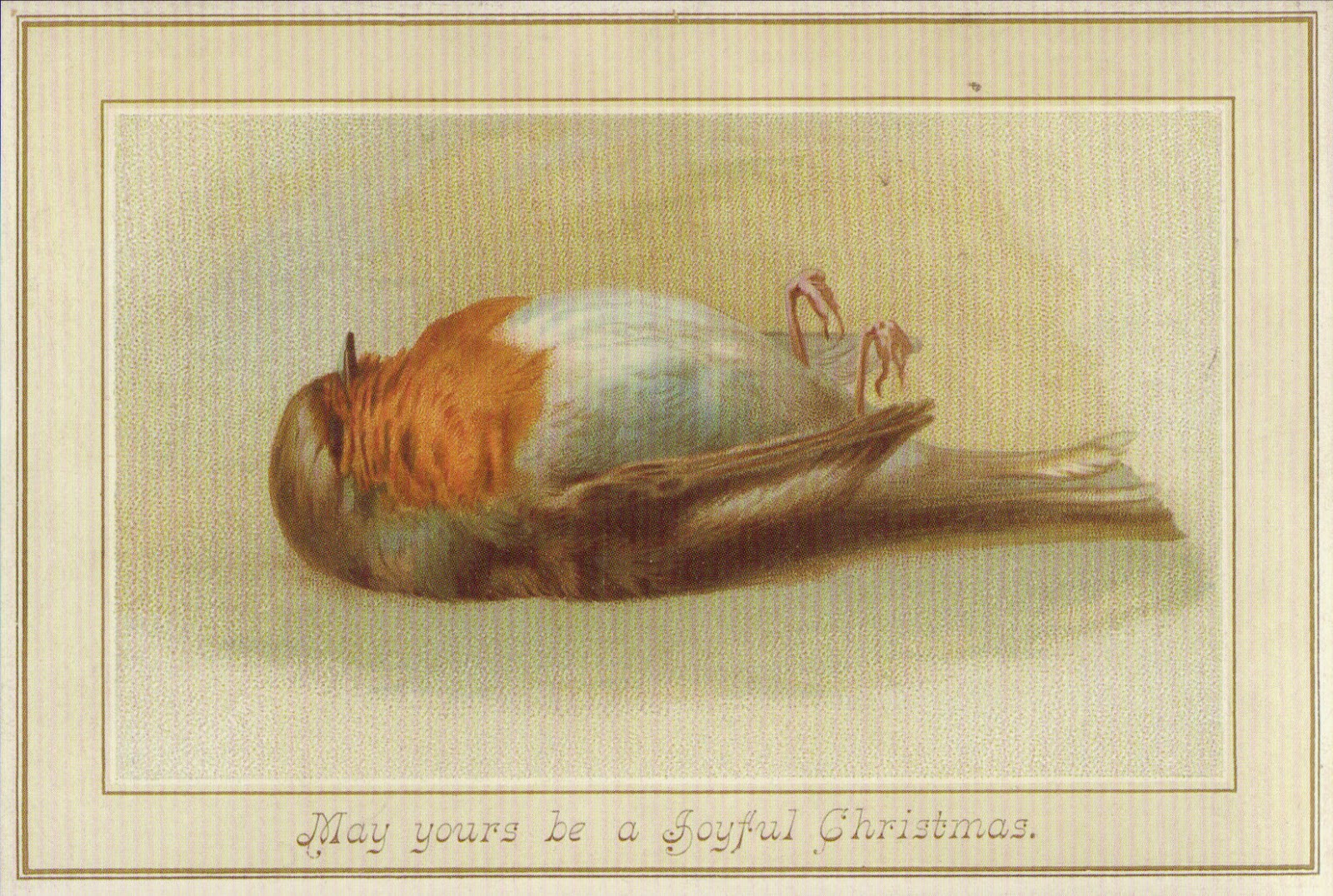24 Days of Blogging, Day 15: “wild and sweet the words repeat Of peace on earth, good will to men.”
Today the Los Angeles Unified School District closed all of their schools, citing a “creditable threat” to an uncertain number of locations. Though luckily nothing happened there, (whether students were saved by being home or whether they were never really in danger will probably never be known) it served as another reminder among far too many of just how tattered our world is just now.
In my office we fielded the predictable questions. Yes, our schools are open; we have no knowledge of any threat to our schools and the Orange County public schools are all open as well. Yes, we have advised our school staffs to be extra vigilant and to take all reasonable safety precautions. Yes, we do have safety protocols at all of our sites and our teachers and students have been directed as to what to do in a variety of situations.
All of these questions are cover for the more basic question, “Can you guarantee that you will keep my child safe?” Though I'm able to answer positively to every variation, I'm very glad that no one asked this more fundamental question, the only thing with which they were really concerned. Because if they did ask that question, I would have to answer truthfully and tell these parents no. None of us can do that. No amount of security preparation, equipment, and vigilance can anticipate every threat, and even some foreseeable threats cannot be defended against without locking each child up in a permanent vault.
Our culture has changed, and though we work to do everything possible, at heart I know my only true defenses are hope and prayer. It feels like many people I know are burdened with fears this holiday time, and to many of them, hope must feel as weak and ineffectual as it does for me.
When I started this blog five years ago, I felt very overwhelmed by the many unknowns in my new position as superintendent. As I began to navigate the people, sites, and money problems that still overwhelm me sometimes, I started saying to myself, almost as a personal pep talk, “Work with hope.” This is not to say that everything turned out perfectly, in fact many of the things I hoped for did not come to pass. “Work with hope,” is not a contract stating that x amount of work will yield y amount of results. Rather, it is the only way that I can live, and the only thing I can offer today.
Work with hope for a different future for our children. Our hope may not always be rewarded. I can't tell all the people struggling with burdens that hoping will bring a desired result. I do, however, believe that it is what makes us most human and what gives our every action meaning beyond itself.
I hope for good for all of you, and I will continue this hope, even when I am disappointed.
As always, I welcome your comments.
Image : http://www.torange.us/Backgrounds-textures/wallpapers/Hope-24771.html
Twenty-four Days of Blogging, Day 14: “What is this lovely fragrance?”
Today's post is dedicated to my good friend Jennifer who tried very hard to change the subject when I spoke about this at her Christmas party.
This seems to be the year to talk about the wild and weird parts of the Christmas celebration. The tradition of the Nativity display is credited to St. Francis, who staged a living gathering of figures representing the Holy Family, their guests, and the animals. Through the years this scene has become a standard decoration in many homes, usually one of the few reminders of the Christian overlay to the feast of Saturnalia.
Nativity sets have become so commonplace that there is an entire subgenre of unusual nativity scenes. Mary, Joseph, shepherds, and kings are represented with dogs, cats, ducks, Coke cans, Legos, StarWars figures, and monsters. Google weird nativity scenes and then come back.
And then there is the caganer.
In Barcelona and other parts of Spain and Portugal, there is a tradition going back to the 1700s of hiding a pooping figure in a nativity scene. Although the origin of this tradition is not clear, there are two trains of thought as to the reason. The first explanation is that the figure is a good luck symbol, as he or she is literally fertilizing the earth (and I have used both he and she and literally correctly in that sentence). The other explanation is that the figure provides a counterpoint to the sacredness of the scene. Contemporary caganer include figures of the Pope, of President Obama, and of Queen Elizabeth, so the tradition also has a mocking element.
And while it seems on its face blasphemous to have such a figure among the sacred tableau, in truth it is the most human moment of the scene. Both the act of the deficator and the act of the one who places it there are completely human acts, the bodily function and the need to undercut the sacred and serious with a good old fashioned whooped cushion.
Christmas is a time of surprises…look behind the stable, you never know what you will find.
And I have another one tomorrow!
As always, I welcome your comments.
Image: http://www.orangepolkadot.com/my_weblog/2009/12/catalan-traditions-el-caganer.html
Twenty-four Days of Blogging, Day 13: “They know that Santa’s on his way”
A friend of mine posted n interesting article on Facebook today. You can find it here. It talks about the fact the the Washington Post Style Guide now accepts the pronouns they, them, and their for a singular antecedent (e.g. After a person has totaled your car by driving it through a Christmas tree lot, you get angry at them). This represents a shift from the long maintained rule that the pronoun for an singular antecedent should be he or she if the gender is known and he or he or she if unknown (e.g. If someone should forget where he or she hid the elf on a shelf, he or she should retrace his or her footsteps).
There was the predictable ringing of Facebook hands over this movement one step closer to Armageddon. My first reaction was the same, that the barbarians at the gate had been given a skeleton key. However, after reading the entire article and thinking further, I had a surprising second reaction. After all, I’m the person who cringes every time I hear someone pronounce the T in often. But I’m OK with this; it’s probably a good thing.
My first reason for embracing this change was found in the article itself. The use of the singular they is not a modern corruption of perfect language. It has been found regularly in English for centuries, and it has been used by our greatest writers including Chaucer, Shakespeare, and the King James Bible (which is the word of God…male and female he may have made them, but he can’t always keep the pronouns straight). In fact, many of the modern “traditional” rules are modern devices to try to codify a messy language. Writers have always used the singular they because it’s often hard to write beatutiful language without it.
Which leads to my second argument, the singular they can lead to cleaner construction and clearer meaning. For years it has been somewhat acceptable to use it in speech because it can be difficult on the fly to manage the verbal trapeze of him or her (When a shepherd left his or her flock to visit the babe, he or she brought his or her staff to frighten and wolves that he or she might encounter on the way). They can clean this and so many stilted sentences without any loss of clarity. When reading The altar server dropped the candle and burned their cassock, no one wonders who they are.
Finally, I long for a day when I can get rid of the choice between sexist language or bad writing. I was taught that the singular pronoun to represent either gender was he. Claims that this was sexist were always poo-pooed with the fact that he represented he or she, which was a much easier claim to make as a male having all of language assume masculinity as universal, than it would be for a female. However, the solution of compound hes and shes seemed a terrible price to pay for appropriate sensitivity. The sometimes suggested (but luckily never adopted) s/he is beyond execrable, and other efforts to create new gender neutral pronouns have been about as successful as Esperanto (one could argue that Esperanto is a more successful language adaptation. There are several books and at least one movie that use it). There is no need for a new gender neutral pronoun, for we all know the gender neutral pronoun is they.
Think what a pleasure it will be to not stop mid sentence to fit form over meaning. One of the greatest arguments for this adaptation is that most (including me) naturally use the singular they. It is only through habit that we stop and restructure our thoughts and our language (maybe I should just make it plural). The Washington Post is not changing language, they are setting us free from a meaningless tyranny.
…and isn’t that what Christmas is all about?
As always, I welcome your comments.
Image: http://www.zazzle.co.uk/they+pronoun+stickers
Twenty-four Days of Blogging, Say 12: Rejoice!
Today begins the celebration of The third week of Advent, known as Gaudete Sunday. Since I've been at a party this evening, I haven't had time for a full blogpost, so I suggest that we all rejoice, and I'll try to come up with something more substantive.
Image: http://divineoffice.org/?date=20151213
Twenty-four Days of Blogging, Day 11: “Visions of Sugar Plums?”
“Where was that figgy pudding emoji?”
Great…it's hard enough thinking of what to say and how to word it, now I have to think of the appropriate picture to compliment it! Should I use that face? What does it mean when the mouth is a jagged line? Is that good? Is the red face angry or embarrassed? Hmm, maybe this one…no wait, that one is definitely kissing…inappropriate on so many levels. Maybe I should use a pointing finger…oh my gosh, what finger is pointing, no, it's OK. What is this? I have to pick the race of the hand that's gesturing? OK, let me hold my hand up next to the screen…nope, none of them match my skin tone. I'm looking pretty tan today. Maybe by the time they see me again I'll be much paler…better go with Simpson yellow…does anyone use the other colors?
I think there was a compass somewhere…where was that…ugh, the flags…who uses these? Was the compass with the tools or with the school equipment? Hey, there's a hot dog now…have to remember that for the next time. I wish I could simply delete huge groups of these so I could find the ones I wasn't more quickly. Maybe a bicycle, since I'm going riding later…wait, that doesn't look anything like my bicycle. If I send that will they know I'm referring to myself, or will it look like I'm talking about some other cyclist? What even is that? Who would ever want an emoji of that? Oh, wait, it isn't what I thought it was…thank goodness. Perhaps I should spell it out with the block letters…
RING
Who could that be…oh. “Hi, I was just texting you my answer. Oh, sorry you have been waiting…it's taken a while to finish my answer. Just tell you? Oh, OK…five.”
Twenty-four Days of Blogging, Day 10: Trump Words (Part 2)
Yesterday I defined trump words as terms that are used in argument that are difficult if not impossible to refute. After writing about screen time yesterday, some have suggested other terms, and I've thought of a few myself. One that maybe is the best illustration of this technique is politically correct. Any attempts to show sensitivity toward a group can be instantly invalidated by accusation of political correctness. Likewise, the preface, “This might not be politically correct…” gives license to the speaker to voice virtually any statement without responsibility for causing offense.
However, this isn't the word that I intended for today. Instead I'd like to keep the focus on words we use to battle change or dismiss attempts at innovation.
Another trump word that is used in the area of new digital realities is narcissism. The use of social media and digital communication tools is often described as contributing to the narcissism of young people. For goodness sake, they take endless pictures of themselves and post them for the world to see. They are constantly looking to texts for affirmation and identity. They write blog posts about their most mundane thoughts experimces, and observations and send them out to the world as if someone is interested (uh oh). Clearly these are all symptoms of extreme narcissism, and clearly they are caused by digital tools. Digital tools are bad because they encourage narcissism. How could anyone want that?
Once again, my argument is with the black an white conclusion of this trump word. I'm not saying that young people aren't narcissistic…I think this part of the definition of being a young person…or a person. Nor am I saying that digital tools can't be used improperly with negative effects. What I object to is the blanket condemnation through a non-quantifyable term (the line between appropriate self esteem and pathological narcissism…if it exists…is razor thin). Not every person who uses digital tools is narcissistic, nor does every narcissist use digital tools (I have found many of the pundits who preach this message to be extremely narcissistic. My generation did not grow up taking selfies…because we didn't have the tools to do this. There is no moral superiority in primitive photographic equipment.
As we move forward into a digital future, we do not advance either progress in the field or honest analysis by painting in black and white poison terms. We must refuse to be trumped by ignorance in our search for truth.
As always, I welcome your comments
Image: https://www.flickr.com/photos/centralasian/7164371273
Twenty-four Days of Blogging, Day 9: Trump Words (Part 1)
While I'm sure most who read this title will automatically think this post is about the current political scene, I'm actually thinking about someone else. Though, now that I think about it, it may not be completely unrelated.
Discussing the validity and value of new instructional methods and tools and social change brought on by these tools is important. We need to all think critically about what we are doing and be open to changing direction if a new path seems to be a dead end or leading into trouble. Legitimate discussion and argument are important tools of change.
But there is a type of argument that I find utterly infuriating, which is using trump words. Trump words are terms that have power in themselves, and once they are applied to something, whether legitimately or not, any effort to refute the statement makes a person look like they are embracing something terrible. Trump words win without earning it. There are many of these in the area of technology, but for illustration we will focus on one today and another tomorrow.
The first of these words, which I have primarily heard in the past year, is screen time. Parents and educators are able to criticize one to one device programs or the shift from paper work to digital work by claiming that children have too much screen time. This term is usually accompanied by some statistics about the affect of screen time on the brain, on sleep patterns, on behavior. We clearly must keep these kids away from these screens. Some also point to claims that interacting with screens is affecting the wiring of the young brain. To argue for screen time seems after this to be wishing evil upon children.
There are three problems with this trump word. The first is there is no definitive study that proves any of this more than anecdotally (sloppy science is the best friend of trump words). Second, there is no definitive statement of what “too much” screen time is. I suspect that working on a screen twenty-four hours a day would affect a child's behavior, mainly because the child would never sleep. Is one hour a day OK? Is two?… For most proponents of this argument, too much is ten minutes more than they want. I certainly am not saying that all students' activity at school and at home should be digitally based. I have always argued the importance of creating a balance of time on and off devices. However, parents also want students prepared for the modern workplace, and the modern workplace requires screen time.
Finally, this argument works with the underlying assumption that if if there are effects, that screen time will always affect children (and us) in the same way. I am certain when humans began to interact with words on a page, this caused dramatic changes to brain structure. Everything we encounter changes our brain structure. Even if humans are still adapting to our interaction with digital devices, this does not mean that this adaptation is bad or that it always will be so. It can be frightening to picture a world where people learn, produce, and communicate in ways that their ancestors did not, but this is the story of the human race.
What is most irritating about this word is that it is an agenda driven, rather than student driven, word. It is used to stop a program or to halt exploration of new tools. Many of these people are the same ones who tried the same tactic with wifi in the classroom. They make any movement in this area a direct assault on children, rather than sincere efforts to help children in the most authentic way possible.
As always, I welcome your comments.
Image: http://www.torange.us/Backgrounds-textures/abstract-backgrounds/Words-of-the-poet-29074.html
Twenty-four Days of Blogging, Day 8: A Passing Thought
I've been visiting schools this week and next. It's lovely being at schools near Christmas. The decorations are beautiful and the children (and adults) are brimming with excitement for the coming celebrations and time off. Today I attended mass for the celebration of the Feast of the Immaculate Conception with the children of one of the schools, and it was a wonderful liturgy and a nice break in the day. I love almost everything about school visits.
Except for seeing the flag at half mast…it seems that every time I've visited a school there has been a tragedy requiring the lowering of the school flag. These children are going to grow up thinking this is the natural place for a flag to be, as we rise them in a world where terror and violence are practically accepted as a regular part of life.
Let's do something about this.
As always, I welcome your comments.
Twenty-four Days of Blogging, Day 7: “Give Us a Penny to Bury the Wren”
Short one today, because after reading this, you will want to continue the search.
“May yours be a Joyful Christmas,” wishes the dead bird…WHAT?
As hard as it is to believe, “traditional Christmas” did not always look the way it looks today. Many of the time honored traditions and images of Christmas are creations of the last two hundred years. Artists and marketers like to take us back to Victorian England to capture a nostalgia for when Christmas was really Christmas. Shoppers in malls are entertained by “Dickens Carolers,” who capture in their dress and song a reality that feels less commercial and far more joyous, nothing like a top hat, hoop skirt, and scarf to say “Merry Christmas!”
What is lost in this 21st Century nostalgic portrayal is exactly how completely weird the Victorian Christmas was. Dickens, who supposedly captured these traditions so well in A Christmas Carol was actually picking and choosing from among a wide variety of Christmases to create the Christmas we know today. Victorians celebrated (or didn't celebrate) the holiday in many ways that would seem much more offensive than a plain red cup. In many ways, the Victorians were making up Christmas as they went.
Nowhere is this seen more clearly in the Christmas cards. Sending cards for the holiday was a new “tradition,” and many of the cards were anything but Hallmark. For an entertaining afternoon, search for strange Victorian Christmas cards and enjoy the images. Though you will see some fir trees and a very rare appearance of Father Christmas, you will primarily see images of weird personified animals, scenes of violence and death, and Krampus, all with a joyful greeting.
The strangest thing I found today were a number of cards with detailed pictures of dead birds. While the artistry is obvious, the juxtaposition of picture and message is truly jarring to a modern eye. The birds in the pictures I saw were small, too small to be made into Christmas dinner (perhaps four and twenty could be baked in a pie). They reflected a very different sensibility, where a picture could be beautiful apart from its context (remember, this is the culture that would pose for pictures with their dead relatives). The bird on the card is a beautiful drawing and therefore a charming Christmas gift, as suitable as a drawing or photograph dying tree covered with tinsel.
I'm not trying to suggest that the Victorian Christmas was right and our own is wrong, but rather that the cultural trimmings of our celebration only make sense through the lens of our time, and someday our descendants might look at our Christmas cards and wonder about how strange we were and how little we understood the true meaning of Christmas.
As always, I invite your comments.
Image: http://valleyofsteel.blogspot.com/2014/12/creepy-christmas-cards-bizarro.html

